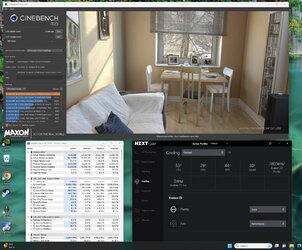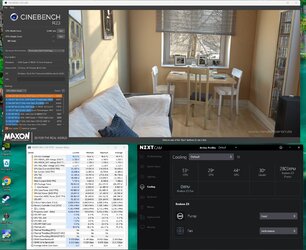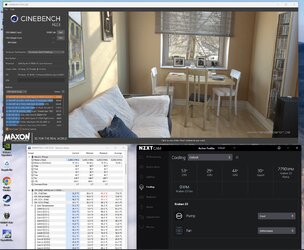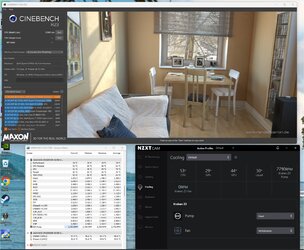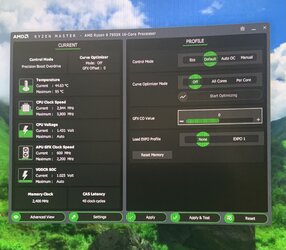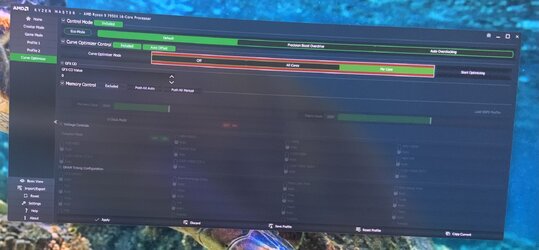- Joined
- Jul 19, 2023
https://pcpartpicker.com/list/MZz7tn Doing my first overclock of my AMD 7950X build linked
but I’m having issues getting above 36000 on Cinebench. I’m doing just an EXPOI profile base enabled PBO over clock with all setting AUTO except manual setting the AIO score to 180. Since a 10 min Cinebench run doesn’t see my water temp rising above 32c and it had it at 152.
It’s stable at a score of 36700 on EXPOII but when I attempt to set my cpu-multiplier anything other than auto even 50 GHz or use the curve to under volt all cors even -5 it is unstable.
I’m very new to overclocking.
here is the HwiNFO for my latest Cinebench run on EXPOI If you need info I’m not showing to troubleshoot just let me know. Thanks
but I’m having issues getting above 36000 on Cinebench. I’m doing just an EXPOI profile base enabled PBO over clock with all setting AUTO except manual setting the AIO score to 180. Since a 10 min Cinebench run doesn’t see my water temp rising above 32c and it had it at 152.
It’s stable at a score of 36700 on EXPOII but when I attempt to set my cpu-multiplier anything other than auto even 50 GHz or use the curve to under volt all cors even -5 it is unstable.
I’m very new to overclocking.
here is the HwiNFO for my latest Cinebench run on EXPOI If you need info I’m not showing to troubleshoot just let me know. Thanks
